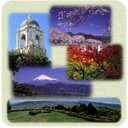0 Likes
Fuencaliente de La Palma (o simplemente Fuencaliente) es un municipio español perteneciente a la provincia de Santa Cruz de Tenerife. Está situado en el sur de la isla de La Palma. La capital municipal se denomina Los Canarios (comúnmente denominada también Fuencaliente), aunque el barrio de Las Indias lo iguala en población. Otros núcleos de población menores son Los Quemados, Las Caletas, La Fajana y el caserío de El Charco. El nombre del municipio viene de una fuente de aguas termales medicinales (las crónicas de la época dicen que sus aguas curaban enfermedades de la piel) conocida como Fuente Santa que había en la costa del municipio, cerca de la actual Playa de Echentive, y que fue sepultada por las lavas del volcán de Fuencaliente (comúnmente confundido con el prehistórico volcán de San Antonio) en el siglo XVII. Recientemente, la Consejería de Obras Públicas del Gobierno de Canarias en colaboración con el Ayuntamiento ha realizado un sondeo en la zona y ha hallado aguas subterráneas a 60 °C. El objetivo es que en un futuro se establezca en la zona una galería para extraer estas aguas y poderlas aprovechar en un balneario, aunque el plan todavía está muy verde porque le falta financiación. El territorio del municipio ha sido asolado varias veces por erupciones volcánicas, de hecho, la penúltima erupción volcánica ocurrida en España, fue la del volcán Teneguía (1971), que está situado en el municipio. Gran parte del municipio se haya protegido, con las figuras del Parque natural de Cumbre Vieja, Reserva natural de los Volcanes de Fuencaliente, el Paisaje protegido de Tamanca y el Sitio de interés científico de las Salinas de Fuencaliente. La economía del municipio se basa en el cultivo del plátano, turismo, el cultivo de la vid y la fabricación de vino. Tiene una extensión de 56,42 km² y una población de 1.935 habitantes (Instituto Nacional de Estadística, enero 2009). La altitud de la capital municipal (Los Canarios) es de 750 metros sobre el nivel del mar y tiene una longitud de costa de 29,18 km. Anteriormente fue un barrio del municipio de Mazo, hasta que se constituyó como municipio independiente. Viene aproximadamente a corresponder con el territorio que ocupó el cantón prehispánico de Abenguareme.
...





Overview and HistoryThe Canary Islands lie off the west coast of Africa and exist as an autonomous community belonging to Spain.There are seven major islands in the archipelago and one minor island, then several small pointy bits which grumble about their diminutive status. The big ones are Tenerife, Gran Canaria, Fuerteventura, La Palma, Lanzarote, El Hierro, and La Gomera.The whole group is the result of volcanic activity from 60 million years ago, which is why the beaches have black sand for you to crunch along on. There are no active volcanos at the moment, but one never knows. Another way to say it is that these islands are part of the Atlas Mountain range which can be traced across northern Africa.At one point in the 16th century the islands were called "the sugar islands" for their production of cane sugar. The economy has since developed wineries, agriculture and now tourism as principal activity.Getting ThereThe Canary Islands have six airports in total. Here's a quick reference for the airports. The main international airport is Gran Canaria Airport, the gateway to the islands. It's 18km south of Las Palmas and has EU, International and Inter-Island terminals.TransportationHighway maintenance to the Canary Islands is sorely lacking, ha ha. Ferry service connects the islands to each other, but you can also take a small plane to hop between them.On the islands you can rent a car but be sure to carry your passport and license with you all the time. People ride bikes and take the guagua bus to get around. (It's pronounced "wa-wa".) Bus schedules can be infrequent or sporadic. Tenerife and Gran Canaria have impressive public transport systems that cover most of their islands.People and CultureThe Canary currency is the Euro; the islands are one of the farthest outlaying regions of the Euro zone.The culture is undoubtedly Spanish, but the mainland custom of kissing on both cheeks when you say hello can be abbreviated to only one kiss. You need quick reflexes to get it right. There's an accent that's a little bit different from mainland, and not quite the same as South American spanish either. The saying is that islanders talk "with potatos in their mouth" because of their lazy-sounding pronunciation.Things to do, RecommendationsHere's a basic look at the main islands. The way we see it, if you need directions for how to have fun on a tropical island full of fruit and fish, you're beyond our help.The largest island is Tenerife with about two thousand square kilometers and a wide variety of plant life and terrain. It is home to the highest point "in Spain", the volcano El Teide at 3718 meters. Tenerife has excellent weather all year round, with a wide variety of terrain and vegetation including crops such as bananas, tomatos and potatos.La Palma does not have very many beaches, and they are not very long. Two popular ones are in Puerto Naos on the west side, and Los Cancajos on the east. Most of the island is a biological reserve. It's known as "the green island"; come here for the mountains, sweet bananas and vineyards.On Gran Canaria you can choose from endless sandy beaches, dunes, mountains and also lush green scenery. This island is home to more than half the population of the Canary Islands.Fuertaventura has the oldest history. Homer mentioned it in his brief travel guide called "The Odyssey." Its name may come from the expression "What a great adventure!", or possibly, "strong wind." It's only separated from continental Africa by a narrow channel. Fuertaventura has the longest of all the beaches, and wonderful fine sand.Lanzarote is a Biosphere Reserve under UNESCO declaration, and comprises one of the six universal models of sustainable development according to the World Tourism Organization. Lanzarote is the farthest East of the major islands and has a year-round average temperature of 22 degrees C.La Gomera sports a National Park with dense forestation, crossed by deep ravines and surrounded by a perimeter of cliffs along most of the coast. Islanders have a special whistling language to communicate across the gorges in the forest.Text by Steve Smith.